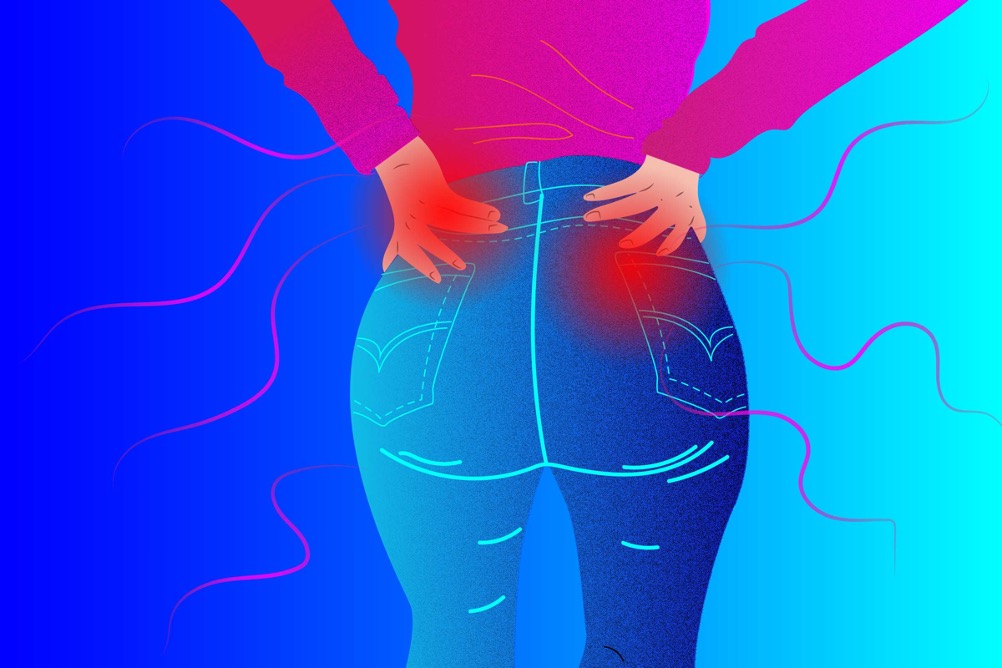Back
What is Up with the Pain in My Butt?
By Pelvic Health Physical Therapy on 2/2/2024

Sciatica and pudendal neuralgia are two distinct conditions that involve nerve pain but affect different areas of the body.
Sciatica:
Definition:
Sciatica refers to pain that radiates along the path of the sciatic nerve, which is the longest nerve in the body. It runs from the lower back, through the buttocks, and down the back of each leg.Causes:
The most common cause of sciatica is compression or irritation of the sciatic nerve, often due to a herniated disc, bone spur on the spine, or spinal stenosis.Symptoms:
Sciatica symptoms may include lower back pain, buttock pain, and pain, numbness, or tingling that radiates down the leg. The pain is usually one-sided and can be sharp or burning.Treatment:
Treatment options for sciatica include rest, physical therapy, pain medications, anti-inflammatory medications, and in severe cases, surgical interventions may be considered.
Pudendal Neuralgia:
Definition:
Pudendal neuralgia involves pain associated with the pudendal nerve, which is a nerve that runs in the pelvic region and supplies sensation to the genital and anal areas.Causes:
Pudendal neuralgia can result from compression, entrapment, or irritation of the pudendal nerve. Causes may include trauma, childbirth, prolonged sitting, or inflammation.Symptoms:
Symptoms of pudendal neuralgia include pain, burning, or numbness in the genital and anal areas. The pain is typically aggravated by sitting and may be relieved by standing or lying down.Treatment:
Treatment for pudendal neuralgia may involve medications for pain management, physical therapy to release muscle tension and improve pelvic floor function, nerve blocks, and in some cases, surgical interventions to decompress the pudendal nerve.
The connection between Sciatica and Pudendal Neuralgia:
Overlap of Symptoms:
There can be some overlap in symptoms between sciatica and pudendal neuralgia, especially in the pelvic and buttock regions. However, the distinct nerve pathways and the specific areas they innervate differentiate the two conditions.Co-Occurrence:
In some cases, individuals may experience both sciatica and pudendal neuralgia simultaneously, often due to complex interactions in the pelvic region. It's essential to consult with healthcare professionals for accurate diagnosis and appropriate management.
Both sciatica and pudendal neuralgia are complex conditions that require careful evaluation by healthcare providers. If you are experiencing symptoms suggestive of either condition, seeking prompt medical attention is crucial for an accurate diagnosis and the development of an appropriate treatment plan.
If you are experiencing pelvic floor dysfunctions associated with the issues above, please reach out to us at Pelvic Health Center in Madison, NJ to set up an evaluation and treatment! Feel free to call us at 908-443-9880 or email us at receptionmadison@pelvichealthnj.com.
Read More:
How Chronic Pelvic Congestion in Men Contributes to Prostatitis By Shannon Strauch, PTA, STMT-1 on 12/11/2024 How lymphatic issues can cause symptoms of prostatitis Prostatitis and Tight Pelvic Floor Muscles: A Comprehensive Guide By Shannon Strauch, PTA, STMT-1 on 12/10/2024 How a tight pelvic floor can be the reason for prostatitis symptoms
Are you ready to live pain free?
Request An Appointment